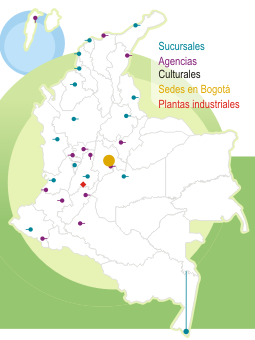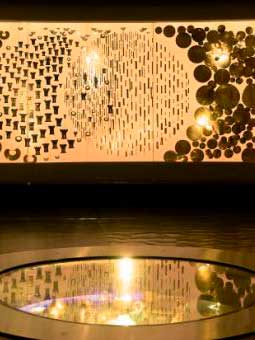Banco de la República’s policy interest rate is currently 9.25%. The policy interest rate serves as the benchmark that the Bank uses to lend to or borrow from commercial banks over very short terms. As with other central banks worldwide, it is the main policy instrument used to achieve the…
Toro-Córdoba, Jorge Hernán
Below are the contents available on the site related to the query.
- Entrada de Blog |
- Entrada de Blog |
Tax authorities in both advanced and emerging economies have resorted to tax wealth as a tool to increase tax revenues, replace other taxes, promote the use of productive capital, and reduce wealth inequality.
- Entrada de Blog |
Hard-discount stores are a retail innovation that has brought significant changes to Colombia’s commercial landscape. Operating under well-known brands such as D1 and ARA, these stores are larger than neighborhood shops, but smaller than traditional supermarkets. They offer a limited assortment—…
- Entrada de Blog |
A recent paper published in Ensayos sobre Política Económica (ESPE) a journal of >Banco de la República (the Central Bank of Colombia), examines the constraints faced by Colombian smallholder farmers in accessing…
- Entrada de Blog |
A recent research paper by Carlos Medina and Christian Posso, senior economists at Banco de la República (the Central Bank of Colombia), studies the long-term effects of the Familias en Acción program (FeA, Families in Action), Colombia's conditional cash transfer program. This type of program…
- Entrada de Blog |
In Colombia, there is a gap in the quality of education between urban and rural households, which is caused by multiple factors. On the one hand, rural families have, on average, less education, and it is also more common for children growing up in rural areas to spend more time working. On the…
- Entrada de Blog |
The Colombian tax system contains multiple reliefs and discounts and simultaneously supports a high degree of evasion. This implies that the statutory or nominal rates established by the law are an imprecise indicator of the actual tax burden on taxpayers, whether they are consumers, individuals…
- Entrada de Blog |
Since 2009, the Financial Stability Department of Banco de la República (the Central Bank of Colombia) has been conducting the quarterly survey on the credit situation in Colombia. This survey is addressed to financial market intermediaries that carry out credit transactions (banks, commercial…
- Entrada de Blog |
As of June 2021, the National Administrative Department of Statistics (DANE in Spanish) and Banco de la República (the Central Bank of Colombia) began to jointly disclose the national accounts by institutional sector (…
- Entrada de Blog |
In an article titled “Job Displacement, Credit and Crime in Colombia” published in the international academic journal American Economic Review: Insights by senior economists Carlos Medina and Christian Posso…
- Entrada de Blog |
A box in the most recent Monetary Policy Report of Banco de la República (the Central Bank of Colombia)(only in…
- Entrada de Blog |
Traditional indicators related to the financial situation of firms such as insolvency, delinquency, and asset impairment, are usually used to assess the fragility of the business sector.. However, there are other alternative indicators to study sectoral productive activity that are not usually…
- Entrada de Blog |
In 2019 and 2020, Banco de la República (the Central Bank of Colombia) showed historically high profits, which amounted to 7.1 trillion and 7.5 trillion Colombian pesos, respectively. This was mainly due to the extraordinary yields of foreign reserves (FRs), which totaled 7.6 trillion and 6.6…
- Entrada de Blog |
The relationship between the management of public finances and the business cycle has been of great interest in economic research. Studies on the subject coincide in pointing out that industrialized countries are characterized by a counter-cyclical fiscal policy, while emerging countries are…
- Entrada de Blog |
The COVID-19 pandemic caused an economic contraction and an increase in the unemployment rate unprecedented in Colombia’s history. At the time of its greatest impact, in April 2020, through the Economic Tracking Indicator (ISE in Spanish), the National Administrative Department of Statistics (…
- Entrada de Blog |
As part of the accountability process required by law, the Board of Directors of Banco de la República (the Central Bank of Colombia) submits twice a year a report to Congress on the situation and outlook of the Colombian economy, along with the results of its management.
- Entrada de Blog |
Labor regulation protects workers, but it also imposes costs on employers. There is evidence that such costs may cause informality and unemployment, as they hinder the hiring of formal employees and the formalization of self-employed workers.
- Entrada de Blog |
Education is the fundamental mechanism for accumulating human capital that allows social mobility across generations, overcoming poverty, and mitigating inequality. However, in Colombia, as in other developing countries, access to quality education has historically been unequal, mainly affecting…
- Entrada de Blog |
During the 20th century, women in Colombia achieved an important milestone by significantly increasing their participation in the labor market, especially in the second half of the century. As can be seen in Graph 1, female labor participation (the fraction of working-age women working or…
- Entrada de Blog |
Between mid-2014 and late 2015, the Colombian peso experienced a depreciation that took the price of the US dollar from COP 1,900 to COP 3,000. The pass-through of such exchange rate shocks to prices in the economy is a crucial issue for the monetary authority, as it reflects the sensitivity of…

































































